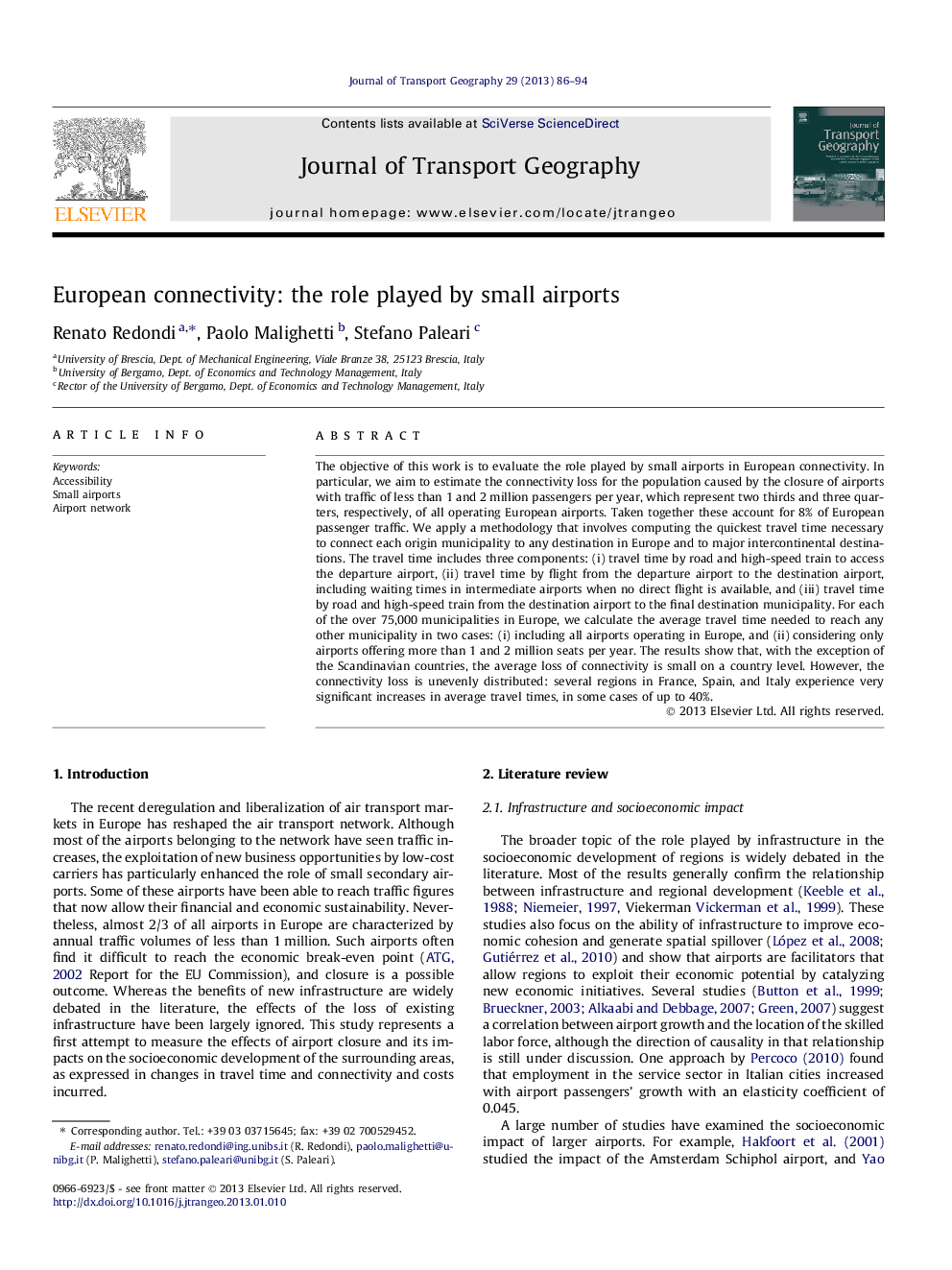| Article ID | Journal | Published Year | Pages | File Type |
|---|---|---|---|---|
| 1059231 | Journal of Transport Geography | 2013 | 9 Pages |
The objective of this work is to evaluate the role played by small airports in European connectivity. In particular, we aim to estimate the connectivity loss for the population caused by the closure of airports with traffic of less than 1 and 2 million passengers per year, which represent two thirds and three quarters, respectively, of all operating European airports. Taken together these account for 8% of European passenger traffic. We apply a methodology that involves computing the quickest travel time necessary to connect each origin municipality to any destination in Europe and to major intercontinental destinations. The travel time includes three components: (i) travel time by road and high-speed train to access the departure airport, (ii) travel time by flight from the departure airport to the destination airport, including waiting times in intermediate airports when no direct flight is available, and (iii) travel time by road and high-speed train from the destination airport to the final destination municipality. For each of the over 75,000 municipalities in Europe, we calculate the average travel time needed to reach any other municipality in two cases: (i) including all airports operating in Europe, and (ii) considering only airports offering more than 1 and 2 million seats per year. The results show that, with the exception of the Scandinavian countries, the average loss of connectivity is small on a country level. However, the connectivity loss is unevenly distributed: several regions in France, Spain, and Italy experience very significant increases in average travel times, in some cases of up to 40%.
► Connectivity loss caused by the closure of small airports appears small at a European scale. ► The countries most affected are Finland, Norway, Sweden, France and Spain. ► Several regions experience very significant increases in average travel times, up to 40%. ► The proportion of the population in these peripheral areas is not large.
